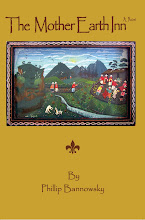Below is the Table of Contents for my completed book, Valdemar's Corpse, about Delaware's secret literary history. It is more than a mere survey. It is a 106,491 word story of Delaware's literary legacy:
1. Introduction: Delaware’s 20th Century Griswold
2. John Lofland: Delaware’s First Literary Pariah
3. Two Articles by John Lofland While Living and Working in Baltimore
4. Lofland the Progressive
5. The Milford Bard and the Mysterious Woman of his Final Romance
6. Two Tales from the Novels of Robert Montgomery Bird;
“Searching for the Body of Sheppard Lee,” and,
“The Confession of Ralph Stackpole, Horse Thief”
7. Delaware Author George Alfred Townsend’s Novels about Slavery & Murder
8. George Alfred Townsend: Between Twain and Able
9. New Castle Hi-jinx; Charles Heber Clark’s Out of the Hurly-Burly
and Ella Middleton Tybout’s Poketown People
10. Henry Seidel Canby & Christopher Ward:
Forerunners of Wilmington’s 20th Century Literary Movement
11. The Novels of John and Mary Biggs and Poe’s Karma
12. Nothing Ends in Life: Mary Biggs’ Lily-Iron
13. The Great Gatsby’s Delaware Connection:
A Review of Gatsby, GATH, and Gault by David W. Meredith
14. Bunny, The Judge and The Last Tycoon
15. Anne & Dillwyn Parrish, And The Roles of the Interloper
16. James Whaler, Wilmington’s Most Successful 20th Century Poet
17. Haunted by Home: The Life and Works of Charles Wertenbaker
18. Boojum’s Books: Green Peyton’s
Black Cabin and Rain on the Mountain, and Other Stories
19. First Crash: The Earliest Literary Works of G. Peyton Wertenbaker
20. Victor Thaddeus' Unpublished Comic Opera, ‘ORRIBLE 'ARRY and THE COURT TIGER, and lost novella, LEO REX
21. Children in the Maelstrom: Two Post War Novels by Anne Parrish
22. Where Evil is Stronger Than Love: The Wartime Novels of Two Delaware Authors
23. The Patron Saint of Baynard Boulevard: A Personal View of the Life and Times of Wilmington Poet David Hudson
24. The Legacy of Delaware’s Poets and the Post World War II Poetry Movement
25. The Hoax Nobody Noticed
Sound interesting? Curious? Even if you might be interested or curious, you may never have the opportunity to read it. Valdemar's Corpse has been rejected by the University of Delaware Press twice, Oak Knoll Press twice, as well as by Greywolf Press and Schiffler Publishing Ltd. Most of it has been serialized in The Broadkill Review but not in sequence, so the "story" doesn't emerge. I don't even know how widely read those chapters have been. I can no longer afford to self publish. What should I do? Should I send files of the manuscript, along with selected pictures, to people who might be interested? I don't know who'd be interested or curious. Should I keep trying to find a publisher? How long will that take? I've done all this work and I'm really tired and sinking deeper into poverty. I'm frustrated that what I consider to be valuable information is not being made available, especially for the sake of discovery by others who never knew there was such a thing as a Delaware' secret literary history. Or should I conclude that no one's interested in past Delaware literary artists and give in to the prevailing amnesia? Could that be some reflection about the prevailing interest in current Delaware literature? Or should I conclude I've deluded myself with my own conceit, wasted my time, and just delete the file?






